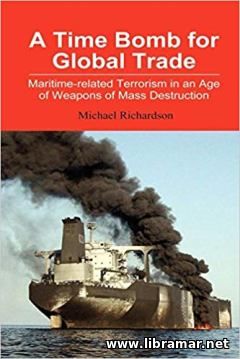 This book is devoted to the maritime-related terrorism deservedly considered one of the most dangerous threats of the shipping industry of today. In fact this work is very important and timely. There are so many industry experts and government officials asking lots of questions about this problem, however there is a significant gap in the information and policy proposals.
Subject problem is particularly crucial in the Southeast Asian region taking into account that Singapore and Malacca are both critically important waterways. In the pages of his book, the author provides interested readers with the examination of the main causes and also solutions to the maritime trade safety which is being threatened.
According to the reviews provided by the readers this volume is highly informative and shall be definitely recommended to every single person in the industry since the safety and security matters are equally important to everyone involved.
Read this book and you will know what shall be done and what is actually being done in order to counter threats associated with the terrorism and check the effectiveness of the safeguards. The major threats have been discussed together with their impact and security measures proposed.
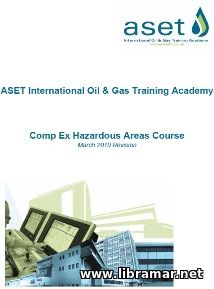 Here is the sixth edition of the training course developed to introduce the trainees to the fundamental operating techniques and procedures. It is also going to give them required guidance to working with the electrical tools in hazardous environments. The importance of and demand for the appropriate training in this area is absolutely evident.
All persons working in such conditions shall have full understanding of the safe working practices and be duly competent in the procedures. The whole content of the course has been arranged in fourteen units. The first unit covers general principles including the nature of various flammable substances, temperature coding, gas grouping and ingress protection, and area classification.
The second unit is devoted to the standards, marking and certification. The rest and actually the main body of the course is dealing with the different methods of protection, wiring systems and ignition sources, inspections and maintenance conducted in accordance with the provisions of BS EN60079-17 standard, validation testing, safe isolation and PTW system. There are two appendices covering the reading of labels and providing data for the flammable substances for use with the electrical tools.
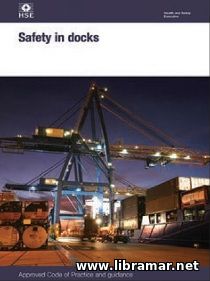 The present ACOP, i.e. Approved Code of Practice together with the guidance are covering all important aspects of safety during the docking operations. The intention is to assist people assigned duty to provide compliance with the relevant provisions of the recognized standards, acts and regulations. These would typically include people controlling the dock facilities, suppliers of various plant and equipment, managers and employers. safety officers, representatives and others.
The content of this code of practice has originally been developed to duly address safety matters with the main focus made on assisting duty holders in easily getting the understanding of the fundamental requirements required to comply with the Health & Safety as Work Act plus other statutory documents. It will also provide industry with the detailed guidance prepared by the experts, giving some valuable practical advice on getting in compliance with the law to all parties involved.
You will just have to follow the advice and instructions provided in this guidebook and this will be enough to reach all required compliance. Though following the guidance given herein is not mandatory, it is highly recommended to ensure compliance.
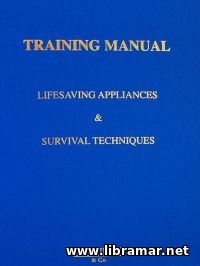 An absolutely useful publication that shall be possessed on board every single ship. The manual has been designed to be suitable on board any type of vessels including domestically and internationally operating vessels. The content is fully compliant with the Reg. 36 of SOLAS requiring ships to carry the Training Manual.
The purpose of the publication is to provide all crew members with all required information covering the shipboard lifesaving appliances and also survival techniques; it also explains the meanings of each alarm on board ship. Every effort has been made by the authors to provide readers with the duly updated information they shall be aware of including all applicable standards and regulations.
The document is intended to be used as a reference book for the crew members who are assigned a duty to instruct others in the use of the shipboard lifesaving equipment, survival methods and abandonment procedures. It should be placed in each of the mess rooms and recreation rooms and be readily available to all people on board.
Twelve sections of the training manual address emergency response and survival crafts, PPE, i.e. personal protective equipment, and launching appliances, radio equipment and pyrotechnics, survival techniques and recovery from water, search and rescue operations and other aspects considered important.
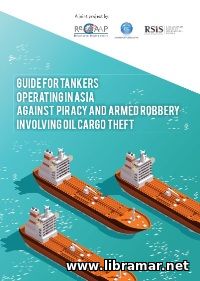 The content of the present guide was developed by the world leading experts in the field with the ultimate intention to facilitate secure and safe seas and improve overall safety in the maritime shipping industry. The authors of the volume made a excellent and very successful attempt to provide the industry with the illustration on the current threat of maritime piracy as well as the armed robbery against vessels in Asian region, with the particular emphasis placed on the incidents that involve the oil cargo theft.
Another goal was to provide required assistance to the ships trying avoid such incidents. It will also cover the port-incident management. The publication will be great when used as a supplement to any national guidebook on armed robbery and maritime piracy. The authors of the volume have taken into account the occurrence of the above mentioned incidents on all types of vessels both at ports and sat sea.
The main body of the publication has been arranged in eight major sections covering the threats to the mariners and established effective ship protection measures, vessels under attack, security planning considerations, risk factors, post-incident reporting etc. It is supplemented with several annexes providing additional information on the reporting forms, definitions, partner organizations and voluntary reporting.
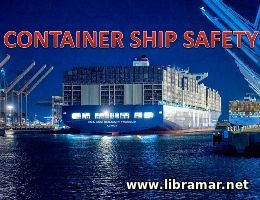 It goes without saying that safety is top priority in the container shipping. It shall be remembered at all times that ineffective management of the risks involved can eventually lead to such consequences as loss of human life, damage to the ship, cargo, environment and, of course, reputation. The operators and owners of the vessels look to their class societies seeking proper guidance through the design and construction as well as operation of the vessels in order to ensure safety at sea.
The first container ships built in the 1950s were converted tankers. Subsequently, dedicated designs for container vessels have been developed. Today, there is more than 60 years, experience in designing, building and operating container vessels. Container ship safety is addressed mainly to shippers; however, every single person engaged in container transportation by sea, shall be duly aware of the importance of handling containers in safe and correct manner...
The present training resource will be of great practical interest and use not only to the newcomers to the maritime container shipping industry but also to the professional mariners engaged in the transportation of the containers willing to refresh their basic knowledge.
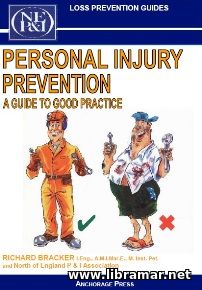 In a huge number of modern shipping companies the safety of people on board has significantly improved in the past years. The associated safety awareness programs the use of the safety equipment and continuous training have eventually made vessels much safer places for working and living. However, it is still truth that there are too many accidents, incidents and injuries occurring.
The seafarers are suggested to take particular care not only for their own safety but also for the safety of the shipmates. Shipboard safety is a matter of critical importance and is a priority consideration; it means that all tasks shall only be attempted once all potential implications are fully considered and all appropriate actions have been taken.
The book starts with the intro providing general information about personal injuring and PPE followed by the shipboard safety management, planning of work and relevant procedures, workshop practices and housekeeping, maintenance for the shipboard electrical equipment and systems, handling chemical items, shipboard lifting appliances, fire precautions and associated emergency procedures to be closely followed, hot work including welding and burning, cargo work and many other important aspects.
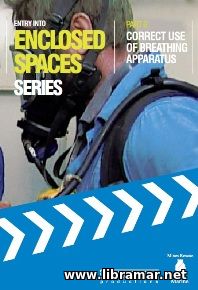 And here is the closing part of the world popular and respected training series devoted to the entry into enclosed spaces. This part is dealing with the correct use of breathing apparatus and is supplemented with this training video. The content of the publication has been arranged in seven sections.
While the first section gives some overview of the breathing apparatus commonly used on board vessels and offshore installations, the second section provides necessary instruction on their examination and assembly, and this has to be conducted on the regular basis to ensure that the equipment is fit for service and ready for immediate use.
The other sections of the volume are dealing with the bench testing and proper donning the breathing apparatus set, followed by the familiarization and practice information, and instructions to conducting training and drills. The closing section lists the resources. Assessment questions and answers included. Note that all other parts of the training series are also available and cover the Awareness, Preparation and Procedures, Equipment, and Enclosed Space Entry itself and finally Emergency Procedures and Rescue. We recommend you to download the whole set and go through it very carefully.
« 1 2 3 4 5 6 7 ... 10 11 » |







